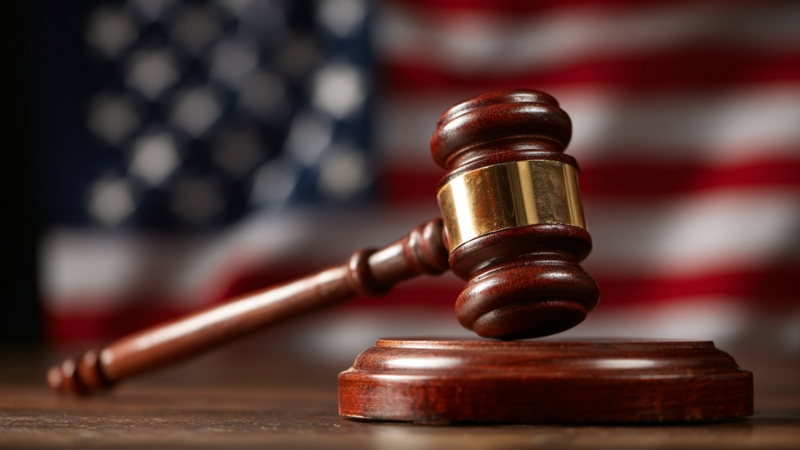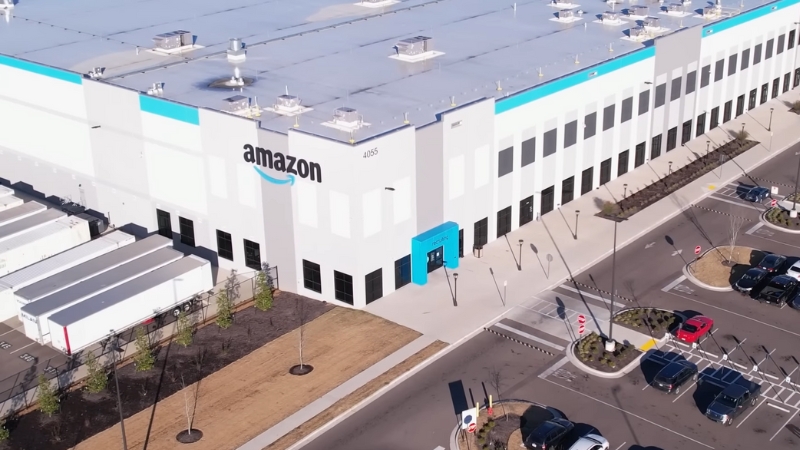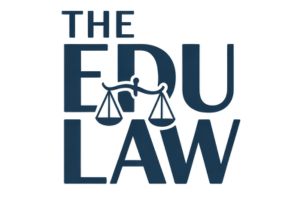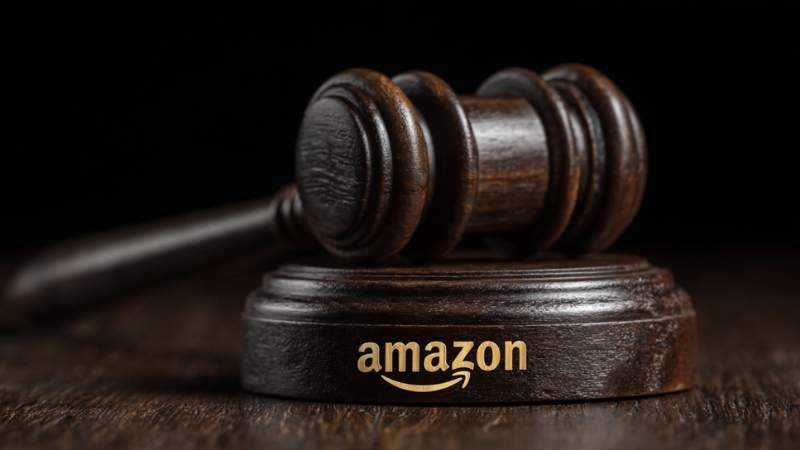The year 2025 saw one of the most consequential labor law disputes in decades, as Amazon found itself at the center of a legal battle over whether states have the constitutional authority to impose stricter workplace protections than those guaranteed by federal law.
The conflict between California and New York on one side, and Amazon’s legal team on the other, brought to the surface long-standing questions about the balance of federal supremacy and state sovereignty in labor regulation.
At stake was more than Amazon’s compliance obligations. The case tested how far states can go in protecting workers’ rights when the federal government already maintains comprehensive laws like the National Labor Relations Act (NLRA) and the Fair Labor Standards Act (FLSA).
The decision, though narrowly tailored to Amazon’s warehouses, has ripple effects across the logistics, tech, and gig economy sectors. It also revives a debate as old as the Constitution itself: where does federal authority end, and where do state powers to regulate begin?
Amazon as a Case Study – Why States Targeted Warehouses
View this post on Instagram
Amazon operates over 1,000 facilities nationwide, employing more than 1.5 million U.S. workers, making it the second-largest private employer in the country after Walmart.
The company’s reliance on algorithmic performance monitoring, strict productivity quotas, and just-in-time logistics has drawn criticism from labor advocates, who argue that workers face dangerous pressures to meet unrealistic targets.
States like California and New York passed laws specifically addressing:
- Productivity Quotas: Requiring employers to disclose quotas to employees and regulators, and banning those that interfere with federally mandated rest or meal breaks.
- Worker Safety: Imposing stricter state-level occupational safety standards than those set by OSHA.
- Union Protections: Expanding anti-retaliation rules to ensure that employees engaging in organizing activities are shielded from surveillance and discipline.
Amazon claimed these rules created a patchwork of state-specific labor laws that conflicted with federal uniformity. States countered that such measures were well within their police powers, the constitutional principle that states may regulate for the health, safety, and welfare of their citizens.
Federal Authority in Labor Law
The federal government has long asserted authority over labor regulation through Article I, Section 8 of the Constitution, granting Congress the power “to regulate Commerce with foreign Nations, and among the several States.” From this basis emerged landmark statutes:
| Federal Statute | Year | Scope of Authority | Key Provisions |
| National Labor Relations Act (NLRA) | 1935 | Union rights, collective bargaining | Protects the right to organize, bans unfair labor practices |
| Fair Labor Standards Act (FLSA) | 1938 | Wage and hour protections | Minimum wage, overtime rules, and child labor restrictions |
| Occupational Safety and Health Act (OSHA) | 1970 | Workplace safety | Establishes national workplace safety standards |
| Employee Retirement Income Security Act (ERISA) | 1974 | Benefits regulation | Federal control over pensions and benefits |
Federal law is often seen as a floor, but in some areas, it functions as a ceiling where states cannot pass conflicting or more expansive rules. This creates recurring disputes whenever states test the boundaries by legislating above federal minimums.
State Authority in Labor Law

States retain broad police powers to regulate labor within their borders, provided they do not directly conflict with federal statutes. Historically, states have gone beyond federal law in areas such as:
- Minimum Wage: California’s $16/hour minimum wage far exceeds the federal minimum of $7.25.
- Paid Leave: States like New York mandate paid sick and family leave, absent at the federal level.
- Rest Breaks and Safety Standards: California requires meal and rest breaks that go beyond federal rules.
- Warehouse Quotas: California’s AB 701 (2022) was the first law to specifically regulate warehouse quota transparency, later imitated by New York.
These measures reflect a long-standing pattern: when federal law lags, states act as “laboratories of democracy,” experimenting with stronger protections.
The Preemption Doctrine: Where Federal and State Law Collide
At the heart of the Amazon case is the doctrine of preemption, a constitutional principle under the Supremacy Clause (Article VI), which states that federal law overrides conflicting state law. Courts distinguish between three main types of preemption:
| Type of Preemption | Definition | Example in Labor Law |
| Express Preemption | Congress explicitly bars states from legislating in a specific area | NLRA prevents states from regulating union elections directly |
| Field Preemption | Federal law is so comprehensive that it leaves no room for states | Certain ERISA benefits rules |
| Conflict Preemption | State law makes compliance with federal law impossible | A state law requiring longer overtime thresholds than FLSA allows |
Amazon argued that both field preemption and conflict preemption applied, claiming state laws intruded into the NLRA’s domain of collective bargaining and imposed compliance burdens inconsistent with federal standards.
States countered that their rules addressed health, safety, and transparency, not union rights or federal wage standards.
Court Decision in 2025
The federal appeals court ruling in mid-2025 reflected a split outcome:
- California’s Warehouse Quota Law Upheld: The court ruled the measure focused on workplace safety and rest breaks, which do not conflict with federal collective bargaining rules.
- Parts of New York’s Union Retaliation Protections Struck Down: The court held these provisions intruded too deeply into the NLRA’s preempted domain of regulating union-management relations.
This decision highlights a nuanced boundary: states may regulate conditions of work (safety, transparency, rest), but when laws venture into the process of organizing and bargaining, federal supremacy prevails.
Broader Lessons From the Amazon Case

Lesson 1: Federal Standards Are a Floor, But Not Always
For wages, safety, and transparency, states can generally legislate higher protections. The Amazon ruling reaffirmed that federal law does not automatically wipe out stricter state laws unless conflict is unavoidable.
Lesson 2: States Must Frame Laws Carefully
The outcome shows the importance of framing. Laws framed as workplace safety or public health have a better chance of surviving federal preemption challenges than laws directly tied to union activity.
Lesson 3: Mega-Corporations Face Patchwork Compliance
Amazon’s challenge reflected the reality that national employers must juggle state-specific compliance frameworks, which can raise costs but also improve conditions for workers depending on geography.
Historical Context: Federal vs. State Battles Over Labor
The Amazon case fits into a long history of disputes between federal and state authority in labor law.
| Year | Case/Development | Significance |
| 1935 | NLRA enacted | Established federal dominance over union rights |
| 1938 | FLSA enacted | Created national wage and hour standards |
| 1947 | Taft-Hartley Act | Allowed states to pass right-to-work laws, blending state and federal authority |
| 1970s | OSHA disputes | States pushed for stronger safety laws; courts generally allowed them if consistent with OSHA |
| 1992 | New York v. United States | Affirmed federal supremacy but emphasized limits on commandeering state governments |
| 2025 | Amazon Case | Reaffirmed that states can regulate workplace conditions but not intrude on federally preempted union law |
This timeline shows that the Amazon case is not new, but part of a longer constitutional tug-of-war.
Implications for Workers
For workers, the ruling has mixed implications:
- Positive in Strong-Law States: Employees in California and New York gain stronger transparency and rest protections.
- Unequal Nationwide: Workers in states that do not pass additional laws remain limited to federal minimums.
- Union Efforts: While state protections help, the limits on state regulation of union activity highlight the continuing importance of federal labor reform.
Implications for Employers
Employers like Amazon must now invest in compliance systems tailored to each state, creating potential operational costs but also opportunities to standardize higher protections company-wide.
| Impact | For Employers |
| Compliance | Must adapt to varied state rules |
| Costs | Higher payroll/operational costs in stricter states |
| HR Practices | Greater emphasis on training and policy transparency |
| Legal Risk | More litigation exposure if failing to comply with both state and federal standards |
Conclusion

The Amazon case of 2025 illustrates how the U.S. system of dual sovereignty continues to evolve. Federal labor statutes like the NLRA and FLSA remain dominant, but states are not powerless; they can innovate in worker safety, wages, and transparency.
The courts act as referees, drawing boundaries where state innovation tips into federal preemption.
For now, the lesson is that states can push worker protections forward, but must do so in ways that respect federal primacy in union law. For Amazon and other mega-corporations, the era of a one-size-fits-all compliance approach is over.
And for workers, the protections they enjoy will increasingly depend on where they live, highlighting the uneven geography of labor rights in America.

